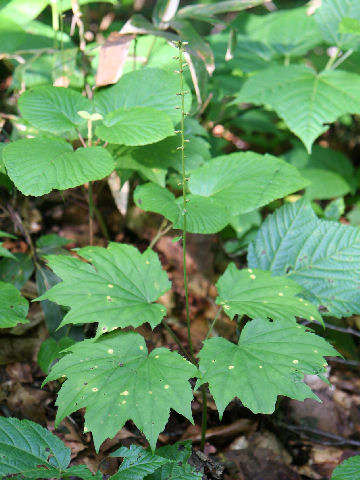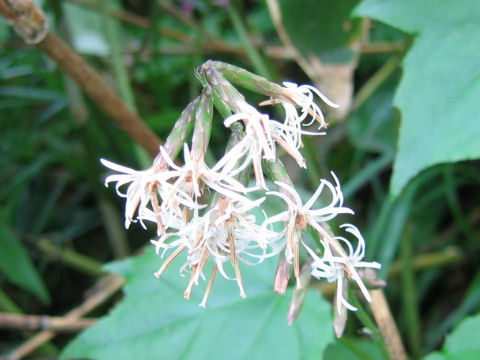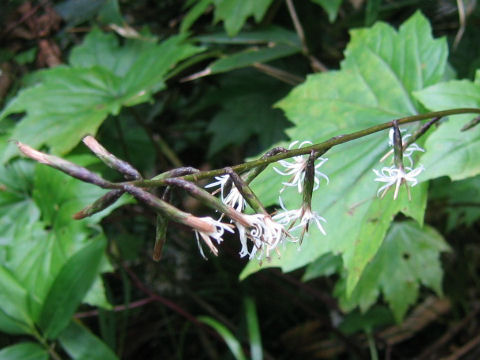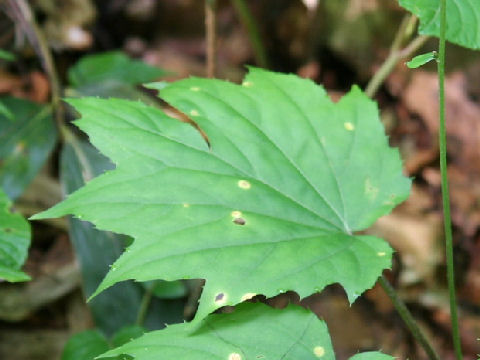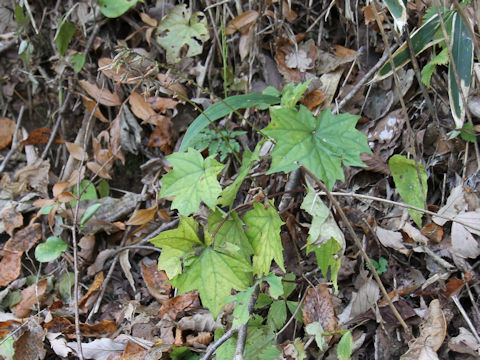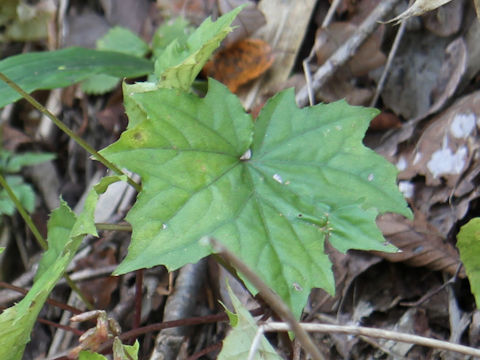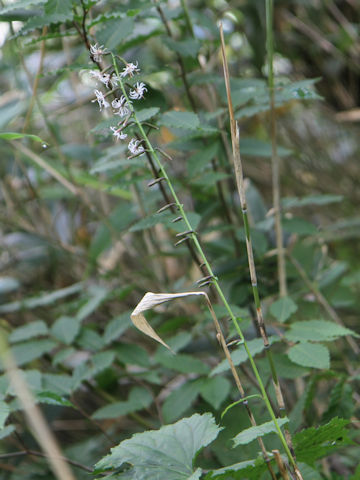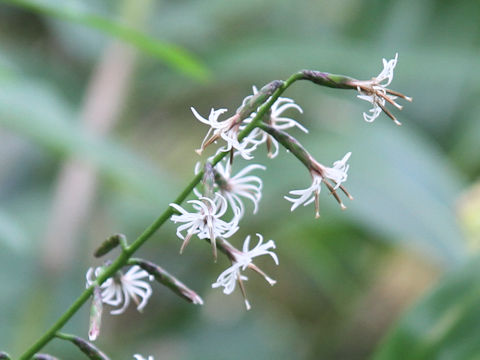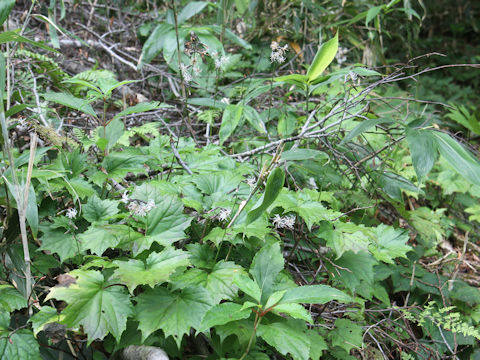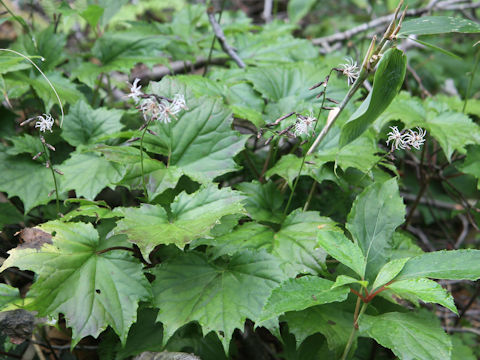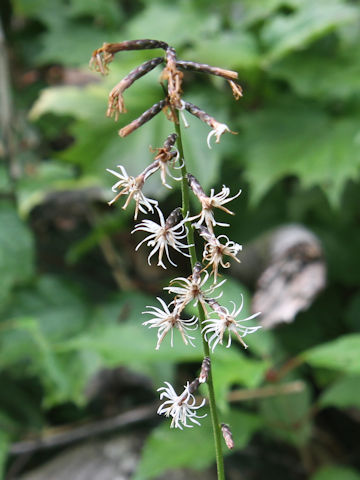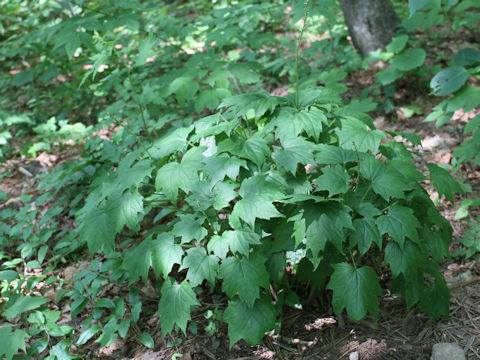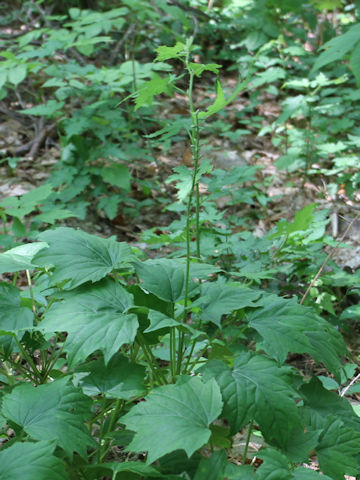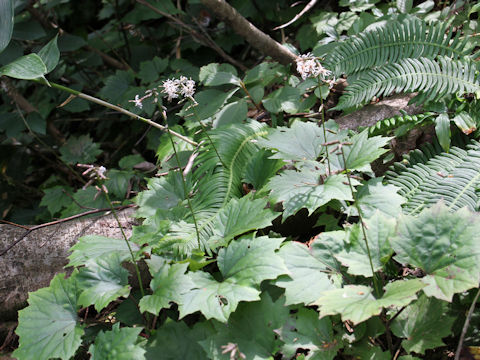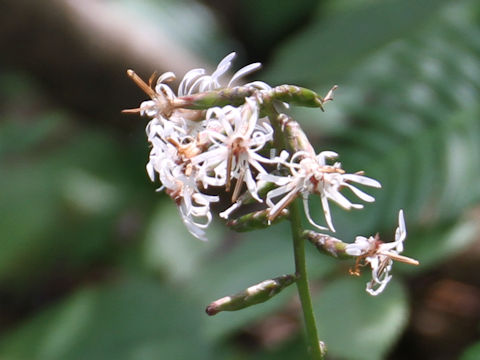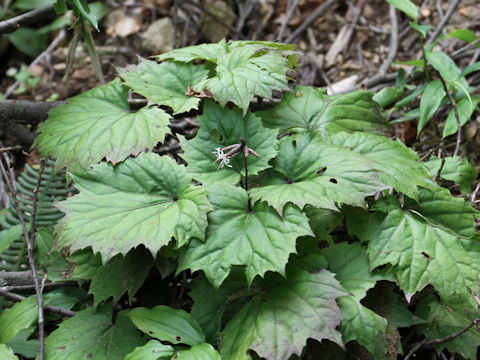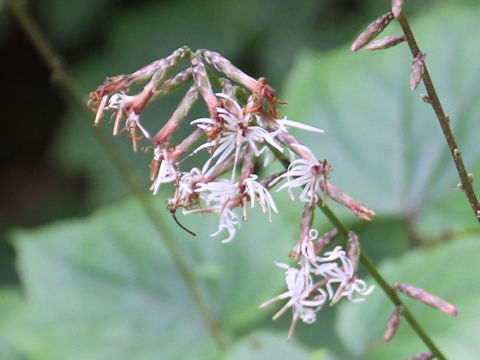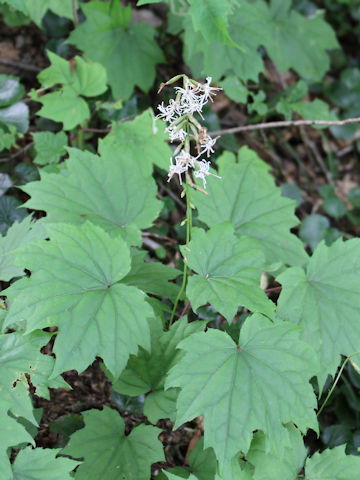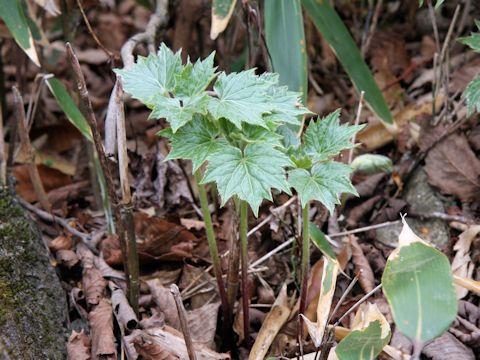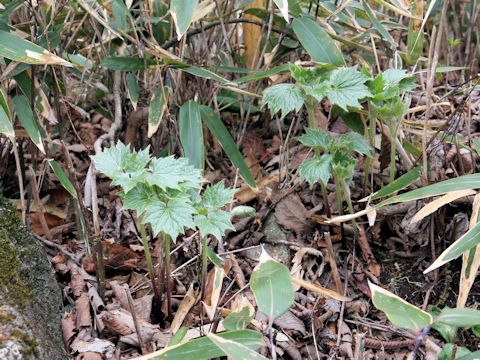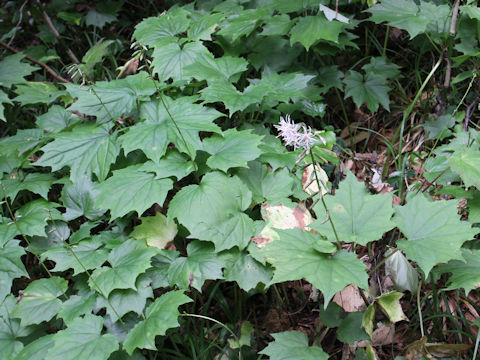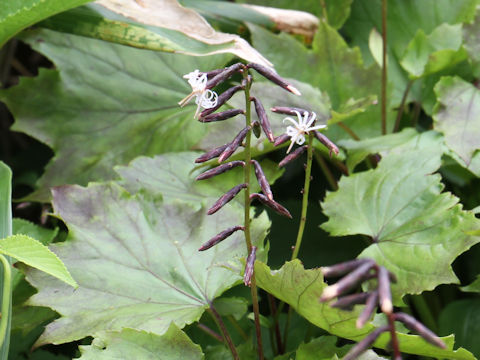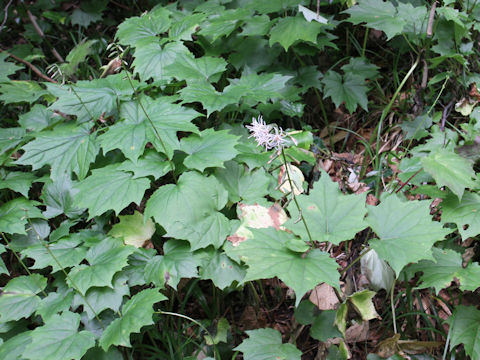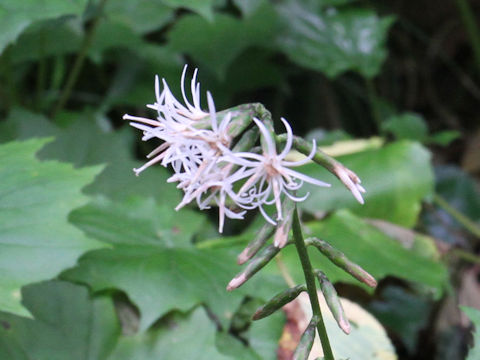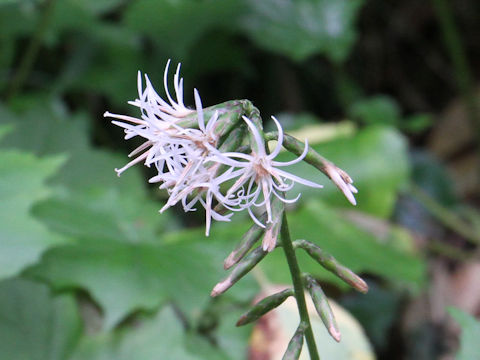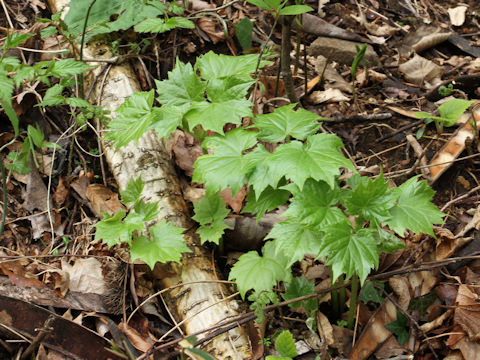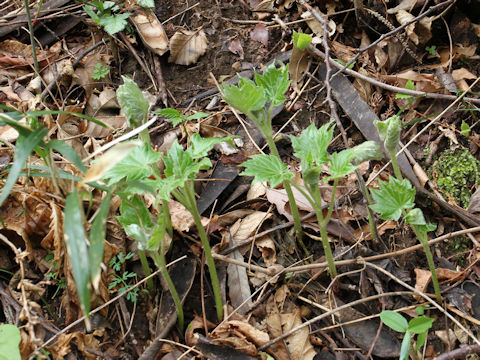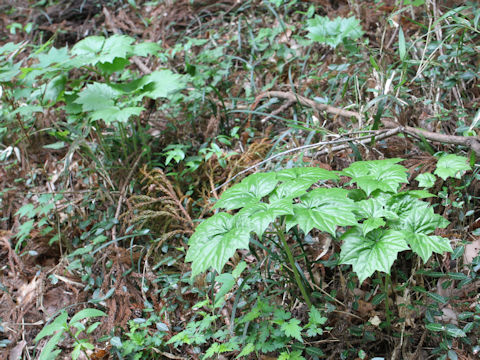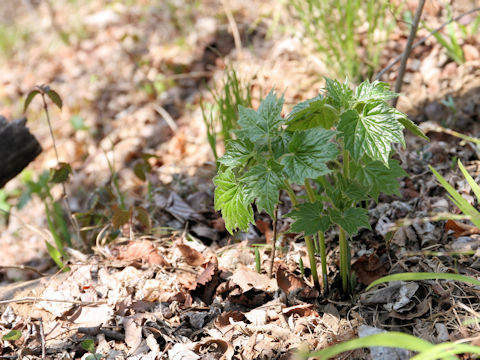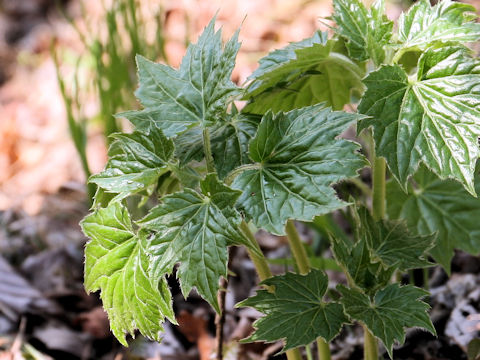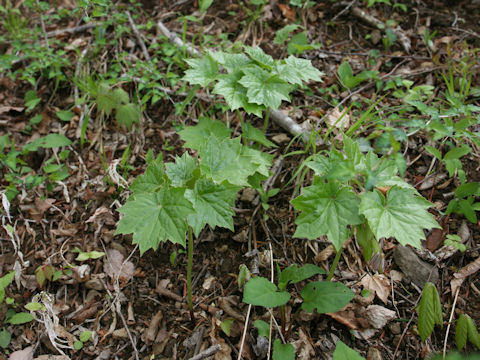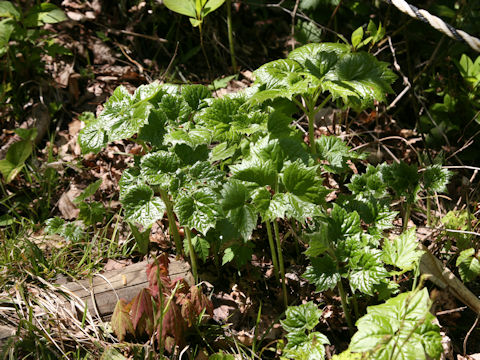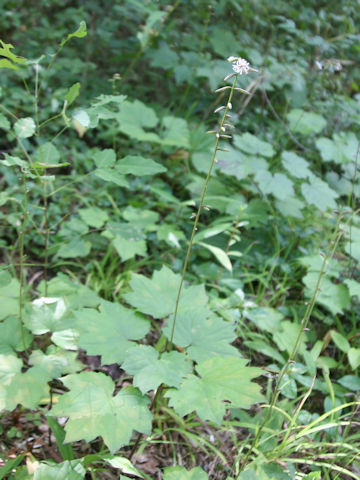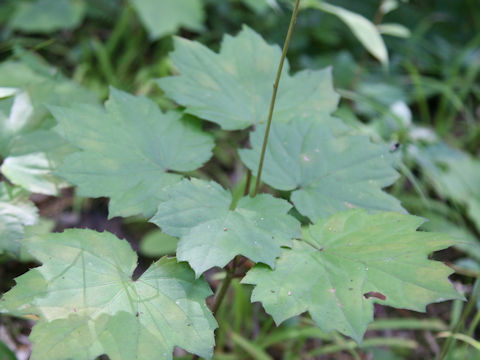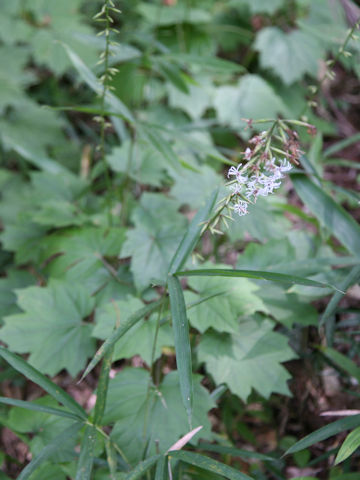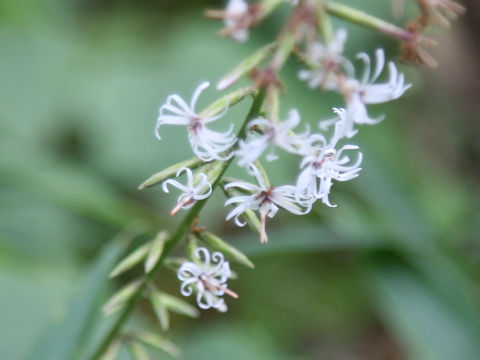
|
|
|
|
−− もっと見る(Show more)−−
−− 閉じる(Close) −−
|
|
|
|
わが国の本州、秋田県以南から九州北部、それに朝鮮半島や中国東北部に分布しています。東日本に多いそうです。山地の木陰に生え、高さは30〜80センチになります。茎の途中に、長い柄のある数個の葉が仮輪状につきます。葉は掌状に浅裂します。8月から10月ごろ、花茎をのばして白い花を横向きに咲かせます。頭花は3個の筒状小花からなります。和名は、花を仏具の払子(ほっす)飾りに使う「はぐま(白熊)」に、葉を「もみじ(紅葉)」に見立てたもの。中国語では「浅裂槭葉兔兒風(qian lie qi ye tu er feng) 」と呼ばれます。 |
|
|
キク科モミジハグマ属の多年草で、学名は Ainsliaea acerifolia var. subapoda。英名はありません。 |
|
|
The "Oku-momiji-haguma" (Ainsliaea acerifolia var. subapoda) belongs to Asteraceae (the Aster family). It is a perennial herb that is native from Akita Prefecture of Honshu south to northern Kyushu in Japan, as well as the Korean Peninsula and northeastern China. It grows mainly in eastern Japan. This herb grows in mountainous tree-shaded areas and it can reach 30-80 cm in height. The several long-petiolate leaves are borne annularly at the middle of stem. They are divided into palmately lobes. The flowering stalks are borne and the white flowers bloom sideways from August to October. The flower-head consists of three tubular florets. The Japanese name is derived from its flowers, which resemble the "haguma" used to decorate Buddhist altar ornaments, and its leaves, which resemble "momiji" (maple leaves). In Chinese, it is called "浅裂槭葉兔兔風" (qian lie qi ye tu er feng). |
|
|
[上・中3] 長野県小谷村中土「雨飾高原」にて、2006年08月02日撮影。 [中1・中2] 岐阜県白川村飯島「三方岩岳」にて、2004年08月08日撮影。 [中4・中5] 茨城県桜川市「足尾山」にて、2013年11月24日撮影。 [中6〜中10] 栃木県那須塩原市「大峠」にて、2014年08月15日撮影。 [中11・中12] 宮城県仙台市「泉ヶ岳」にて、2016年06月04日撮影。 [中13〜中17] 山形県小国町「倉手山」にて、2016年08月14日撮影。 [中18・中19] 茨城県つくば市「筑波山」にて、2011年05月05日撮影。 [中20〜中24] 山形市関沢「雁戸山」にて、2019年08月01日撮影。 [中25・中26] 福島県新地町「鹿狼山」にて、2020年04月21日撮影。 [中27] 宮城県山元町「深山」にて、2020年05月01日撮影。 [中28・中29] 宮城県仙台市青葉区「蕃山」にて、2021年04月15日撮影。 [中30] 宮城県仙台市太白区「中ノ森」にて、2021年04月19日撮影。 [中31] 宮城県加美町「薬莱山」にて、2023年04月27日撮影。 [中32・中33] 宮城県仙台市泉区「将監風致公園」にて、2024年08月20日撮影。 [中34・下] 宮城県仙台市泉区「真美沢公園」にて、2024年09月10日撮影。 |

|
|
Shu Suehiro |
